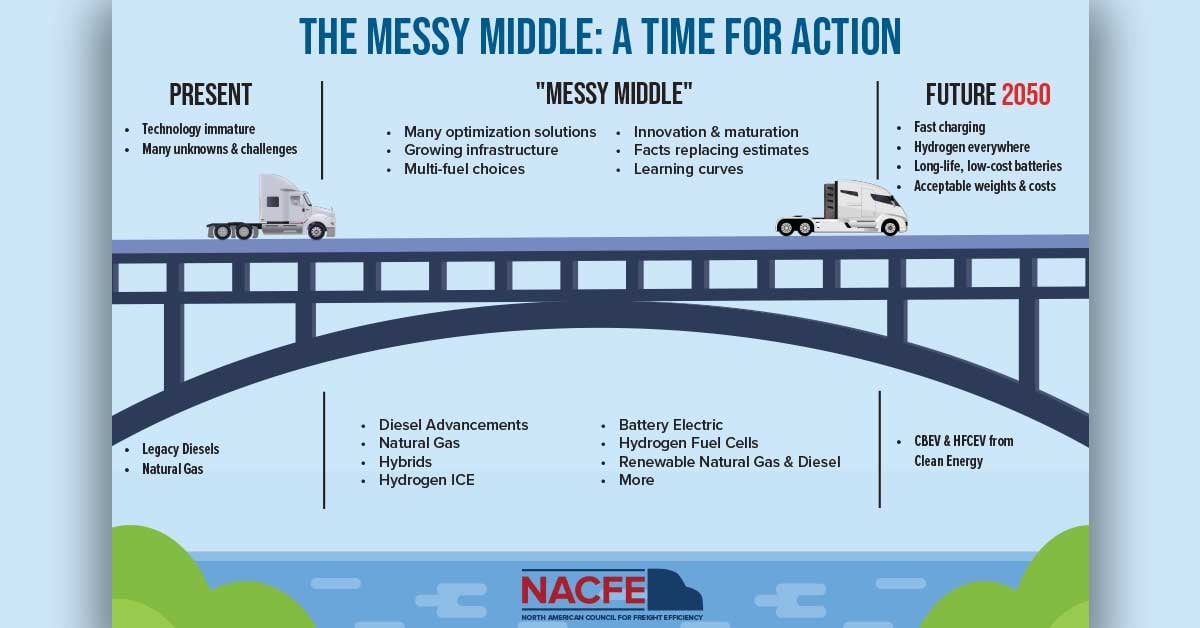Electric Vehicles: How Will Net Zero Net Out for Food Shippers?
by Staff, on Jul 10, 2023 4:55:15 PM

There’s no better time for the planet to have fleets to convert net zero, which means greenhouse gases from fleets going into the atmosphere are balanced by removal out of the atmosphere. But how about for America’s food shippers? A panel of experts recently discussed the options and issues for an all-electric or hybrid fleet.
Today, private and for-hire fleets have a number of alternatives to diesel—ranging from battery electric and catenary electric (powered by overhead or underground wires) to hybrid electric and alternative fuels. These experts specifically explore electric vehicles (EV) powered by battery electric and the growing reasons to consider them.
 Soaring diesel prices are a main cause of today’s high food prices. Not surprisingly, expensive fuel is one of the biggest cost factors for fleets out there, says Ann Mary Myers, Director of Special Projects at Peterbilt, a leader in the design, engineering and manufacturing of premium medium- and heavy-duty commercial vehicles. “I call the electric vehicle an expensive truck that utilizes a cheaper fuel.”
Soaring diesel prices are a main cause of today’s high food prices. Not surprisingly, expensive fuel is one of the biggest cost factors for fleets out there, says Ann Mary Myers, Director of Special Projects at Peterbilt, a leader in the design, engineering and manufacturing of premium medium- and heavy-duty commercial vehicles. “I call the electric vehicle an expensive truck that utilizes a cheaper fuel.”
Myers says Peterbilt plans to bring EV prices down in the next few years. That will lower total cost of ownership – a huge factor in why EVs are attractive to fleets today, she adds.
Food shippers running reefers with diesel-powered refrigeration units will especially benefit.
Fuel savings aren’t the only highlight. There’s less maintenance with EVs, adds Charlotte Argue, Senior Manager of Sustainable Mobility at Geotab, a telematics provider that advances security, connects commercial vehicles to the Internet, and provides web-based analytics to help customers better manage their fleets. Moreover, Argue sees momentum for electrification of fleets coming from three new market forces: companies’ emissions commitments, government incentives, and technological advances.
“Ten years ago, we wouldn't really be talking about electric trucks for a lot of these duty cycles and vocations,” Argue says.
Jessica Savage is Vice President of Service and Distribution at Xos Trucks, a manufacturer of state-of-the-art electric commercial vehicles. She says that starting in mid-2024 Xos Trucks will roll out a full line of Class 5-8 trucks to address a variety of customers’ applications. “We have some really in-depth energy calculations that we can dive into with them to make sure that we are going to be able to meet their needs,” she says.
Vehicle choice isn’t the only consideration for food shippers with private fleets or their for-hire trucking providers. Both Xos and Peterbilt have networks in place to aid with infrastructure and the full electrification journey. A key consideration is electricity availability. When a utility company has to increase the power grid to accommodate a fleet’s needs, it can add years to implementation.
That doesn’t necessarily mean food shippers should rush. Savage says sometimes Xos will counsel customers to wait six months to a year for technology to advance that’s a better fit for their duty cycle, vocation and performance requirements.
For fleets that don’t want to wait and aren’t ready to buy, Fluid Truck offers the opportunity to rent EVs. Fluid Trucks is a peer-to-peer truck sharing platform that offers 24/7 mobile access to a wide array of trucks. Jenifer Snyder, Co-Founder and General Counsel of Fluid Truck explains, “We work with a lot of small and medium businesses who just can't afford to buy an EV.”
By renting or buying, carbon-reducing commercial vehicles are coming. Rick Mihelic, Director of Emerging Technologies at the North American Council for Freight Efficiency (NACFE) is hopeful about green trucks and fleets taking root. NACFE works to drive the development and adoption of efficiency enhancing, environmentally beneficial, and cost-effective technologies, services and methodologies in the North American freight industry.
“Somewhere around 2040 you'll see about a 50-50 mix in the populations,” says Mihelic. And that’s good news for food shippers – and the planet they feed.
This article was originally featured in Edition 2 of 2023 of Food Chain Digest magazine. Download the digital version today!
Like this kind of content? Subscribe to our "Food For Thought" eNewsletter!
Now more than ever, professionals consume info on the go. Distributed twice monthly, our "Food For Thought" e-newsletter allows readers to stay informed about timely and relevant industry topics and FSA news whether they're in the office or on the road. Topics range from capacity, rates and supply chain disruption to multimodal transportation strategy, leveraging technology, and talent management and retention. Learn More




